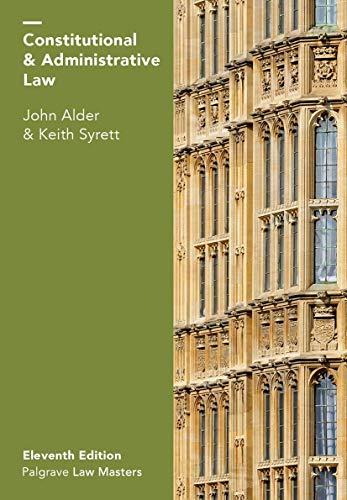Question
Consumer credit agreements: To authenticate whether the credit industry's assertion is factual , a deeper look in the features of the Act s required so
Consumer credit agreements:
To authenticate whether the credit industry's assertion is factual , a deeper look in the features of the Act s required so as to establish if it is biased and consumer centralized. The Consumer Credit Act 1974[1]is made up of two major agreements , the consumer credit agreement and consumer hire agreements. The consumer credit agreement is ' an agreemenr between an individual ('the debtor') and any other person ('the creditor') by which the creditor provides the debtor with credit of any amount[2].''
Some cornerstone features lie within the simplest of parts such as the semantics , which is why the report[3]may have suggested the need to re-look some of the definitions which were last updated in 1974.An illustration of this is placed in thedescription of the parties involved being placed in the word 'individual[4]' creates issues where the debtor is a bank or company , introducing yet another arear in which the Act proves to be outdated section 8(2)[5]as it not only states to whom the Act is applicable but also the amount to be considered within the definition of a credit. Any transaction below the figure of25000 is considered inapplicable meaning that the Act does not even cater for the possibility of inflations as the economy evolves. This is quite limiting as creditors are forced to lend beyond this in order to obtain legal protection. Whilst those who carry on to borrow lesser amounts are left vulnerable in stuck contrast to the debtors who could take advantage of how this means lower legal obligation . This providing insight to the biased nature of the Act.
There is a confusion surrounding what constitutes a 'credit[6]' in the first place , this suggesting that the Act is not clear enough and needs to be updated. The landmark case of Dimond v Lovell[7]showcases this confusion where the credit was both a consumer credit and credit hire agreement. More complex scenarios are explored as in OFT v Ashbourne Management Services Ltd[8]where a credit is difficult to establish when it is in the form of gym subscriptions that are paid in installments. It is from this perspective that one can question how theAct remain relevant in more sophisticated credit set ups that are eminent in the future.
[1]Consumer Credit Act 1974
[2]Ibid 1 Section 8(1)
[3]HM Treasury Report , ' Reforming the Consumer Credit Act 1974:Consultation Response"(2023)
[4]Ibid 2
[5]Ibid 1 Section 8(2)
[6]Ibid 1 Section 9(1)
[7]Dimond v Lovell [2000] UKHL 27
[8]OFT v Ashbourne Management Services Ltd [2011]EWHC 1237
Respond to the above using OSCOLA references. You may address aspects which include the following:
Consider the application of section 75. Consider the position prior to the establishment of the Act. Consider the reason for establishing the CCA and aspects relating to creditor's liability which have proved difficult to interpret. Assess the different cases on creditor's liability and how they have influenced the development of the statute. Consider whether the law offers protection for debtors and how the law balances the interest of creditors.
Step by Step Solution
There are 3 Steps involved in it
Step: 1

Get Instant Access to Expert-Tailored Solutions
See step-by-step solutions with expert insights and AI powered tools for academic success
Step: 2

Step: 3

Ace Your Homework with AI
Get the answers you need in no time with our AI-driven, step-by-step assistance
Get Started


